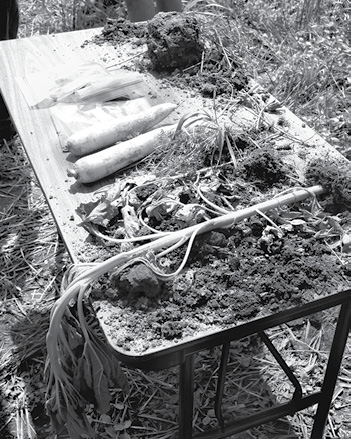Dave Brandt likes to no-till cover crops as quickly as possible after wheat harvest. Besides producing valuable nutrients, the Carroll, Ohio, no-tiller credits cover crops with reducing compaction and improving water infiltration.
No-tilling since 1972, Brandt has used cover crops in his no-till rotation since 1978. He added cover crops to his 900-acre operation to keep the ground covered over the winter, help dry out the top 2 inches of soil to avoid spring tillage and to reduce fertilizer needs.
To protect the soils on his hilly ground, Brandt wants to keep a cover crop growing from harvest until the no-till planter runs through the field the following spring.
Even so, Brandt says you have to avoid letting some cover crops grow so late in the spring that they end up producing seed. The resulting seed production will often remove valuable nitrogen from the root zone.
Today, Brandt has 175 acres of no-tilled corn that only requires an average of 30 pounds of purchased nitrogen per year. The remaining fertilizer comes from cover crops.
“That generates 125 to 150 pounds of nitrogen per acre per year,” he says. “We cut the wheat, spray Roundup and immediately seed a cover crop.
“By seeding hairy vetch or Australian peas right after wheat harvest, we find they’ll outperform any other cover crop. The key is the amount of nodulation, which increases the earlier that you seed these crops.”
Brandt hasn’t zeroed in on growing just one specific cover crop in his sizeable no-till operation. In fact, he’s currently evaluating a half-dozen cover crop options. He credits no-till with slashing fuel needs from 8 to 10 gallons per acre with conventional or conservation tillage down to only 2 gallons per acre from the time he no-tills a crop until harvest.
Hairy Vetch
With a hairy vetch seeding rate of 2 pounds per acre, seed costs run $24 per acre. With $22 in other seeding, fertilizer and pesticide costs, Brandt invests $46 per acre in a cover crop that can grow all winter long, provide a large amount of soil-protecting residue and sharply reduce fertilizer purchases.
“Hairy vetch works very well on our 6% to 22% slopes. It reaches a height of 36 to 42 inches by spring, eliminates costly soil erosion and provides 10,000 to 12,000 pounds of valuable organic matter per acre,” he says. “This cover crop works best on well-drained soils that are not muddy or sticky.”
Both no-tilled vetch and peas continue growing until soil temperatures drop below 34 F.
Australian Peas
With muddy soils, Brandt prefers to no-till peas as a cover crop.
“This crop has a good tap root and helps loosen the top 4 or 5 inches of soil,” says Brandt. “By spring, you’ll have 19 to 20 inches of excellent root mass if the crop doesn’t winter-kill.”
Sunflowers Shine
Brandt finds sunflowers to be another excellent cover crop. Besides providing valuable fertilizer nutrients, you can harvest the flowers and sell them for $1 each at local farmers’ markets.
But with sunflowers, he says that you only capture the already available nitrogen, as this crop doesn’t manufacture additional nitrogen when used as a cover crop.
Radishes

Brandt has 2 years of experience utilizing radishes as a cover crop.
“They are tough to no-till, but our agron-omist thinks this cover crop is pulling additional nutrients up from the subsoil,” he says.
Soybean Cover
Around July 10, Brandt no-tills soybeans as a cover crop rather than as a cash double-crop option.
“We no-till late-maturity group 6, 7 or 8 soybeans normally recommended for southern conditions,” he says. “As a cover crop, these varieties normally don’t produce seed in northern areas and help us suppress weeds.
“We only seed 125,000 soybean seeds per acre rather than the normal 220,000 population we’d use if we were double-cropping soybeans as a cash crop. The resulting soybean stands may look thin, but it doesn’t matter when used as a cover crop.”
With wheat stubble, Brandt waits in the spring to no-till corn or soybeans until all of the other fields have been no-tilled.
“We’ve learned to leave those fields that have spring moisture concerns until last,” he says. “The important thing is that we learn something new every year about the many benefits of including cover crops in a no-till program.”








Post a comment
Report Abusive Comment